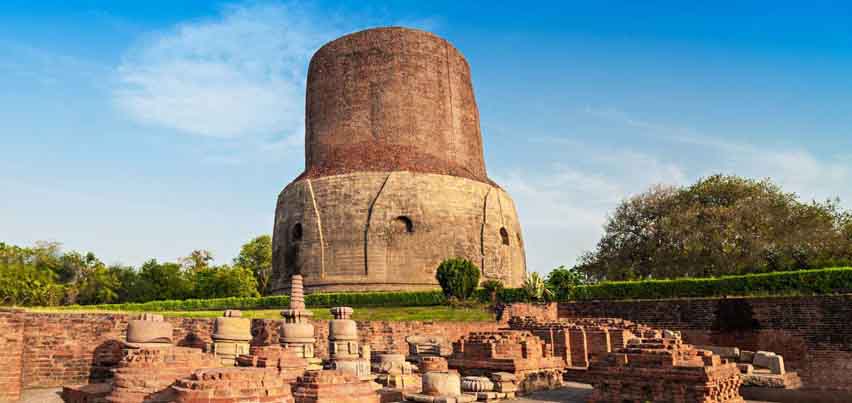Sarnath is famous as Lord Buddha's pilgrimage site. It is 10 kms from Kashi (Banaras). Located in the north. Lord Buddha gave his first message to his beloved disciples at this place. There is a square stupa here. A fence around the stupa is a mud wall in between. In Sarnath the Government of India has constructed a museum, in which objects of the time of Lord Buddha's excavation have been kept. In the national symbol of the Government of India. The quadruped lion is taken in the same museum. There is a Gumbad Vihar in Sarnath, which was built by Dharmapala, a citizen of Lanka. Within it are the golden statue of Lord Buddha, which is very beautiful, there are many good pictures related to the life of Lord Buddha on the walls. A Japanese painter had painted these pictures. There is also a Chinese temple in Sarnath. It was built by a Chinese citizen. The idol of Lord Buddha in the temple is situated in the deep knowledge exchange. There is also a Sri Jain temple along with Sarnath. It also has its own importance. The Teesth Tirthankar Lord Paswanath was born in Kashi itself. In Sarnath, there was the first dense forest and used to perform antelopes here. At that time, its name was 'Rishipatan mrigadi'. After acquiring knowledge, Gautam Buddha gave his first preaching here. In the time of Emperor Ashoka, the 'Dhamek Stupa' here also reminds us of the ancient history of Sarnath, due to the foreign invasions, religious leprosy, the importance of this has gradually decreased. Sarnath's name was named after Mrigdai Sarangdev Mahadev. In the meantime, people went away forgetting it. The brick-stones were removed here. It is said that he was so much that a monastery of Benares was ready from them. In 1905 AD, archaeological department excavated here, then Sarnath was born. A museum was built in which excavated items were kept. A branch of the Bodhi tree was planted and reminiscent of the antique timepiece prepared green gardens and left some deer. There are many tourists here in the year. For Buddhists it is a place of special charm and religious significance. Saranath is one of the four major pilgrimages of Buddhism. Besides Sarnath, Lumbini, Bodhgaya and Kushinagar are the other three major pilgrimages. In addition to Buddhism, Sarnath has also gained importance in Jainism and Hinduism. In Jain texts, it is said to be Singhpur and it is believed that the birth of the eleventh Tirthankar Shayriasnath of Jainism was born a little away from here. There is also the temple of Sarangnath Mahadev, where there is a fair in the month of Saawan. The Chaturkam Singh pillar of Ashoka in Sarnath, Temple of Lord Buddha, Dhamukh Stupa, Chekhandi Stupa, Government Museum, Jain Temple, Chinese Temple, Moolangadkuti and Navin Vihara etc. are visible. The national symbol of India is the two-dimensional duplication of the crown of Ashoka pillar in Sarnath. Over time, along with Sarnath pilgrimage site, it is also moving fast as a tourist destination.
Mulagandha Kuti
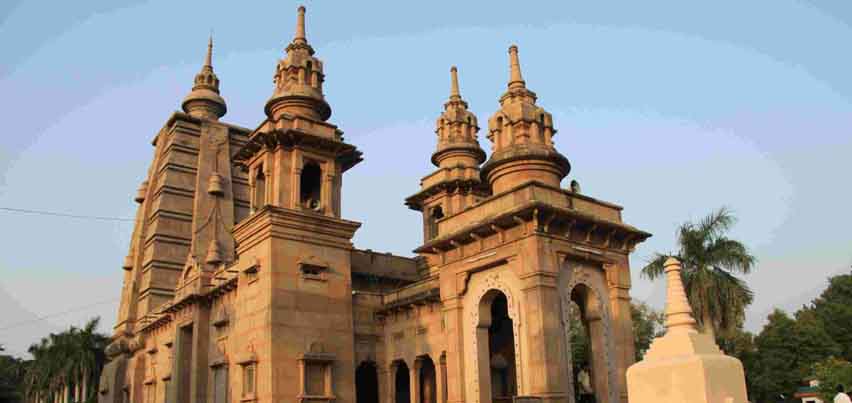
Mulagandha Kuti is a temple of Gautam Buddha. Chinese traveler Hsansang, who came to India in the seventh century, has described it as the 200 feet high statue of Kuti Vihar. The carved spheres and small pillars made of this temple seem to have been built in a secret period. Statues were made while giving the diksha to the five disciples of Gautama Buddha in the temple change.
Dhamek Stupa
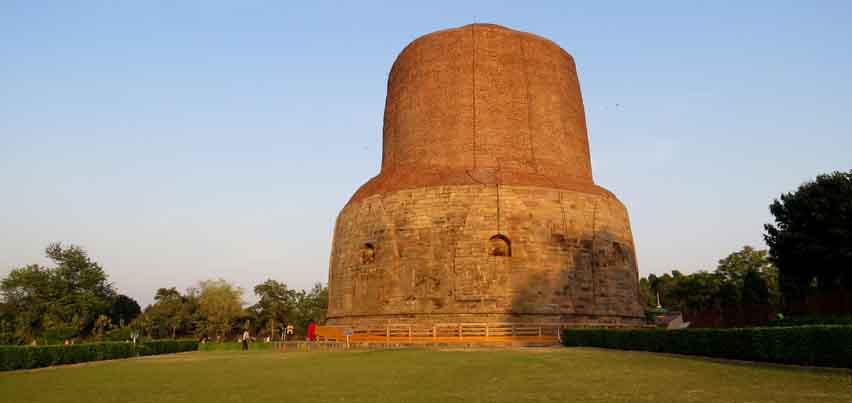
It is also known as Dharmarajika Stupa. It was built by Ashoka. Unfortunately in 1794, Jagat Singh's men had dug its bricks to make Jagatganj a famous idol of Kashi. At the depth of 8.23 m at the time of excavation, a boulder and gold, pearls and gems were found in a marble structure, which was then shipped to the Ganga.
Chaukhandi Stupa
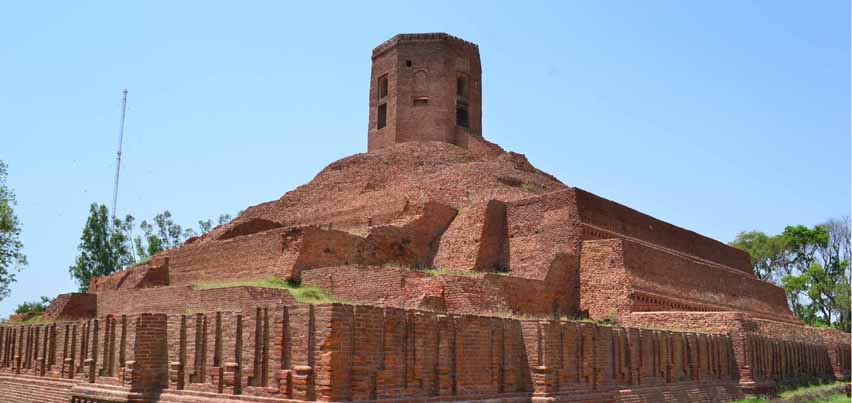
The Chaukhandi Stupa is quite revered for the Buddhist community. Here are many chants associated with Gautam Buddha. It is believed that the Chaukhandi Stupa was constructed as the original Thaadiru temple. Chaukhandi Stupa is the residual monument of Sarnath. At this place, Gautama Buddha had met with his five disciples. Buddha gave him his first sermon. Buddha told them four Aryans truths. That day was the day of Guru Purnima. Buddha came to Sarnath in 234 B.C. This stupa was created in its memory. There is an octopurnine turmeric above this stupa. Here Humayun also spent one night.
Ashoka Pillar
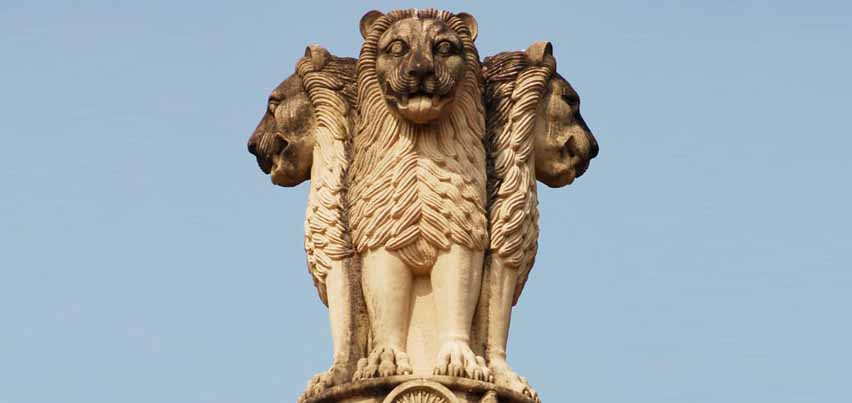
The museum of Sarnath is the oldest museum of the Archaeological Survey of India. It was founded in 1904. This building is in the form of half monastery (Sangharam) in the scheme. There is a store of antique items from Isa 3rd century BC to 12th century. The lion pillar of the Maurya pillar is present in this museum, which is now the national symbol of India. This crown of four lions of Ashoka Pillar was established around 250 AD before the Ashoka pillar. There are four lions in this column, but only three are visible from any angle.
Model of Ashoka Pillar
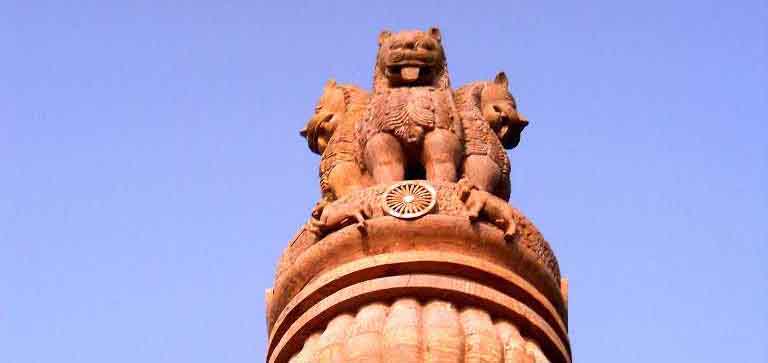
In addition to Buddha statues in many currencies, huge statues, umbrella, etc. of steep postures of monk Bala Bodhisattva have also been displayed. There are sculptures of Buddhist deities in the Triratna gallery and some objects in the museum. Buddha's statues are displayed in the Tathagat gallery, giving the Buddha, Vajrasatva, Bodhavati Padmapani, the poison of poison in different currency, giving the most notable statues of Neelkanth Lokeshwar, Maitreya, Sarnath art style. Signs and symbols are engraved on the ancient remains found here. They were designed to tell about Buddhism and to spread it. Ashoka Pillar 250 BC was excavated during excavation raises most curiosity. There is a lot of mysteries in the history of India during the Gupta period.

